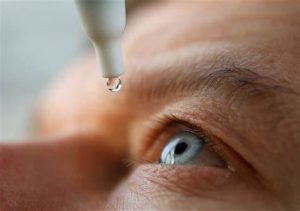FDA eye drop recall 2023, expanded(click to open list)
FDA warns consumers not to purchase or use certain eye drops from several major brands due to risk of eye infection.
Latest information about the ongoing recall! New facilities with eyedrop recall added to list on 11/15/2023.
Cardinal Health Inc. has initiated a voluntarily recall for all lots of six leader brand ophthalmic products. The list FDA provided on October 27 included five products branded as Leader. The list has been updated to include the sixth product.
Additionally, Harvard Drug Group LLC also initiated a voluntary nationwide recall for all lots of two Rugby Laboratories brand eye drops.
The agency has updated the list of products to include the national drug codes (NDCs) that have been confirmed. FDA will provide additional information as it becomes available.
Pseudomonas aeruginosa is a very common bacteria that is also one of the most common causes of eye infection.
This strain of the bacteria attacks the cornea – the clear dome of cells at the front of the eye that typically acts as a protective barrier. In a healthy eye, the cornea should look like a “brick wall” of healthy cells that keeps bacterial and viral invaders out.
When corneal cells are damaged by injury, illness, or chronic dry eye, bacteria can “grab hold” of the cornea and cause infection. A severe bacterial infection can destroy the cornea within 24 to 48 hours.
In this outbreak to date, 68 people in 16 states, have developed severe infections from the outbreak. Three of these patients have died, eight have lost their vision, and four have had an eye removed after using contaminated eye drops.
While those numbers can sound scary, it’s important to remember that the vast majority of eye drop users are unlikely to develop this type of infection. Patients who may be at risk of severe infection include those who are immunocompromised or have existing corneal damage from a recent eye injury or procedure.
Tips to avoid a bacterial eye infection.
- Wash your hands before handling drops: Hand washing is an easy, effective way to reduce the spread of germs. As we learned during the COVID-19 pandemic, we constantly touch our faces, which means we continuously introduce germs near our eyes. Wash your hands often to reduce infection, especially before touching your bottle of eye drops, putting in drops, or handling your contact lenses.
- Use preservative-free eye drops: Although preservatives are supposed to prevent the growth of bacteria in multi-use eye drop bottles, they can damage the cornea, making dry eye worse and increasing the risk of infection. Choose drops that are labeled “preservative-free.” Research has shown they are as effective as preservative-containing drops, with less risk of irritation.
About 1 in 500 people will develop a serious eye infection if they sleep in their contact lenses, according to the CDC.
- Choose single use drops: A 2022 research review showed that about 3% of multi-use eye drop bottles become contaminated when used for less than one week compared with 24% of bottles used for more than one week. Contamination occurs by touching the dropper cap or tip to a non-sterile surface such as a countertop or the fingers, eyelashes, or eyeball itself. Single-use eye drops come in tiny plastic vials rather than a multi-use squeeze bottle. Just pop the top on one vial, drop the liquid into your eyes, and discard the packaging. Don’t try to save a partial tube of drops – doing so can contaminate the tip of the vial.
- Avoid redness-reducing eye drops: Anti-redness drops are called vasoconstrictors. They clear redness by tightening the blood vessels in the eye, reducing blood flow. Using vasoconstrictors several times a day over the long term can make the eyes “need” the drops to look and function normally. That cycle can worsen dry eye, damaging the cornea and increasing the risk of infection.
- Remove eye makeup before bed: Bacteria can stick to your eyeliner and mascara. Before you hit the sheets, remove eye makeup with a gentle cleanser. It’s also wise to put in drops before applying eye makeup.
- Manage your contacts properly: Most contact lens-related infections are caused by poor hand-washing habits, improper lens storage and cleaning, and failure to remove lenses for sleeping. The CDC reports that 40-90% of patients don’t follow the proper contact lens precautions and that about 1 in 500 wearers will develop a serious eye infection if they sleep in their contact lenses. In fact, Pseudomonas aeruginosa is one of the three most common bacteria that causes bacterial keratitis, infection of the cornea that can lead to blindness if left untreated.
Bacterial outbreaks can be frightening, especially in a product as commonly used as over-the-counter eye drops. In general, Pseudomonas aeruginosa does not pose a significant threat of infection to most patients. But if you develop symptoms, call your eye care provider or go to an emergency room. The faster you get the correct diagnosis, the better your chances of saving your vision and your eye.






